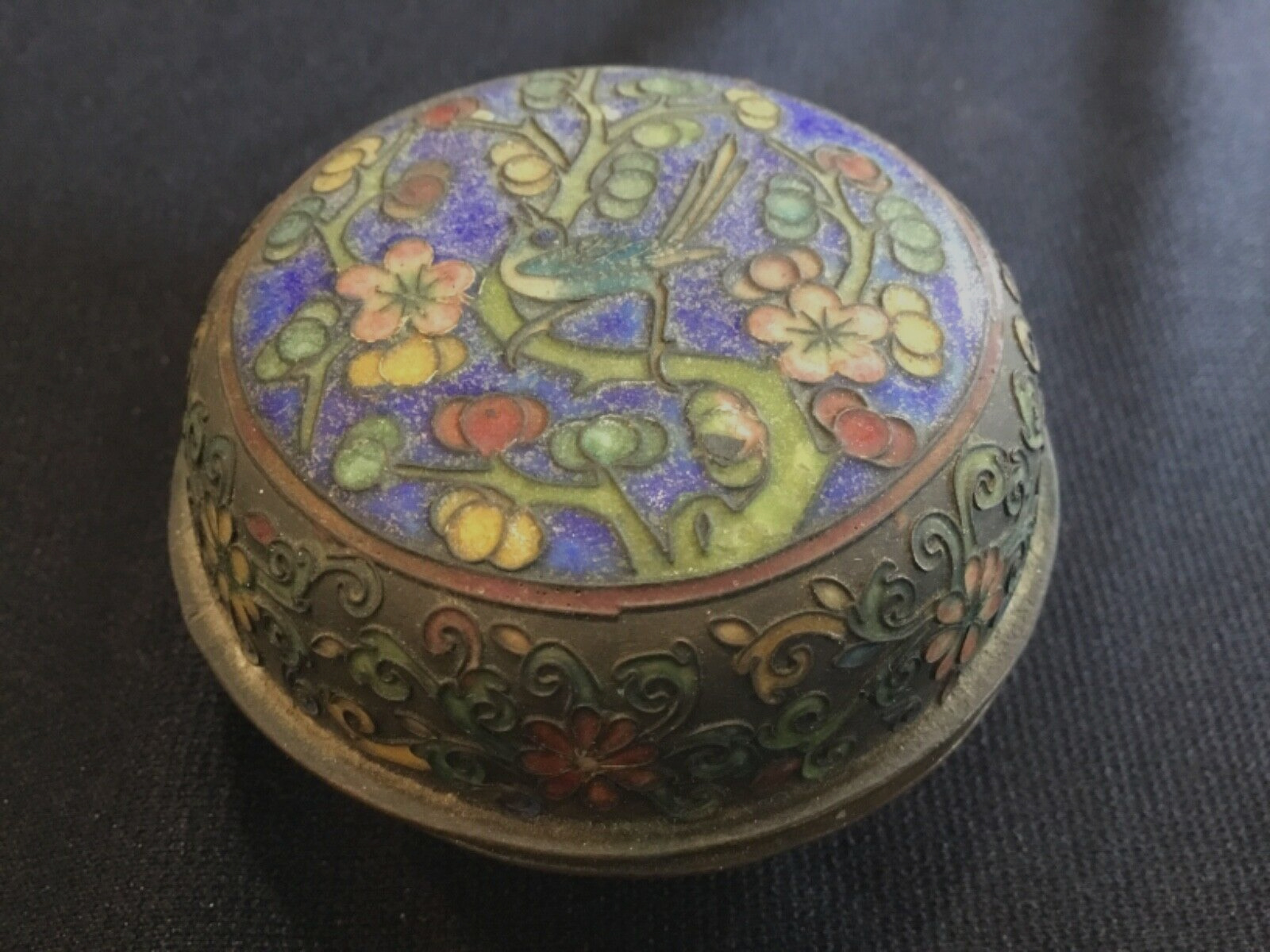To clean cloisonne, gently wipe the surface with a soft cloth dampened with warm soapy water, then dry with a lint-free cloth. Avoid harsh chemicals or abrasive materials to preserve the enamel finish.
Cloisonné, the exquisite art form that marries metalwork and enamel, has a rich history and requires careful maintenance to maintain its luster and beauty. Owners of cloisonné must balance thorough cleaning with a gentle touch to avoid damaging the delicate enamel.
Regular dusting with a soft brush can prevent build-up of dirt, ensuring that this ornamental art remains a vibrant and cherished piece in any collection. With the correct approach, keeping your cloisonné items in pristine condition can be a simple and satisfying task.
Introduction To Cloisonne
Cloisonné is a unique art form celebrated for its vibrant colors and intricate designs. Ornate and historical, it reflects skilled craftsmanship where metal wires are soldered to create compartments (‘cloisons’) on a metallic object. These are then filled with enamel, glass, or gems, and fired to generate stunning decorative pieces.
Understanding The Art Of Cloisonné
The history of Cloisonné art stretches back over centuries, with roots in ancient civilizations. The name derives from the French word ‘cloison’, meaning partition.
- Famous for its detailed patterns and bright enamel.
- Commonly seen in jewelry, vases, and decorative household items.
- Each piece is a testament to the artist’s skill and patience.
The Importance Of Proper Cleaning Techniques
To maintain the luster and beauty of Cloisonné, proper cleaning is essential. Incorrect methods can cause irreversible damage to the delicate enamel.
- Always use gentle, non-abrasive materials.
- Avoid harsh chemicals that can strip color and shine.
- Consistent care will ensure longevity and vibrancy.
Overview Of Cleaning Cloisonné Without Damaging It
Preserving the integrity of Cloisonné while cleaning requires a delicate touch and the right approach.
| Step | Process |
|---|---|
| 1 | Inspect the piece for any loose or fragile sections. |
| 2 | Dust with a soft brush to remove surface dirt. |
| 3 | Use a mild, soapy solution for deeper cleaning. |
| 4 | Gently pat dry with a soft, lint-free cloth. |
Remember: Never soak Cloisonné as moisture can weaken the enamel.
Preparation For Cleaning
Preparing to clean a cloisonné piece requires a gentle touch and the right materials. Cloisonné, with its intricate designs and enamels, demands care to maintain its unique beauty. Starting with preparation, ensure success by understanding the cloisonné type and its condition before diving into the cleaning process.
Gathering The Necessary Materials
To begin, assembling the right tools is vital to protect the delicate enamel and metals. Here’s what you’ll need:
- Soft, lint-free cloths to avoid scratches
- Mild soap that won’t harm the surface
- Distilled water for a residue-free rinse
- Soft-bristled brush, like a baby toothbrush, for gentle cleaning
- Cotton swabs for reaching small spaces
Identifying Different Types Of Cloisonne
Knowing what type of cloisonné you have narrows down the cleaning method. Enamels can be soft or hard, and base metals may vary:
| Type of Cloisonné | Characteristics |
|---|---|
| Chinese Cloisonné | Often on copper or brass with bright colors |
| Japanese Cloisonné | Known for silver or gold bases and subtle hues |
| French Cloisonné | Typically features crystal finishes and pastel tones |
Assessing The Condition Of Your Cloisonne Piece
Before cleaning, a thorough inspection is necessary. Check for any signs of:
- Damage such as chips or cracks
- Tarnish on the metal areas
- Dirt accumulation in the crevices
Bold observation can prevent worsening a fragile cloisonné’s condition. Remember, delicate handling during these initial steps lays the foundation for a successful and safe cleaning.
Step-by-step Cleaning Process
Cloisonné, an ancient technique for decorating metalwork, requires a gentle touch. This step-by-step cleaning process ensures that the vibrant enamel and intricate patterns of your cloisonné pieces remain intact and stunning.
Dusting: The First Step In Cleaning Cloisonne
Start by removing surface dust. Use a soft brush or microfiber cloth. A makeup brush works well for delicate areas. Gently sweep away particles from the cloisonné surface. Always avoid harsh rubbing.
Gentle Washing: How To Safely Clean With Water
After dusting, use a mild solution. Mix warm water with a drop of ph-neutral soap. Dip a soft cloth in this mixture. Wring out excess liquid before gently wiping the cloisonné. Never submerge your piece in water.
- Prepare a mild soap solution
- Dip soft cloth and wring it out
- Clean the surface with care
Drying And Polishing: Techniques For A Shiny Finish
Once clean, dry the piece immediately. Use a clean, dry cloth to pat it dry. Avoid using heated drying methods. Finish by polishing with a jeweler’s cloth. This will restore the shine without scratching the surface.

Credit: www.pinterest.com
Advanced Cleaning Techniques
Cloisonné, with its delicate enamel and intricate metalwork, requires careful cleaning. The methods shared here will help preserve the beauty of your precious items.
Addressing Stains And Tarnish On Cloisonné
Stains and tarnish can mask the true beauty of cloisonné. To address these issues:
- Make a mild cleaning solution using warm water and a few drops of mild dish soap.
- Dip a soft, lint-free cloth in the solution, wring out excess liquid.
- Gently rub the stained or tarnished cloisonné, avoiding forceful scrubbing.
- Rinse with a cloth dampened in clean water to remove soap residue.
- Pat dry with a dry soft cloth, taking care not to rub the surface.
When To Seek Professional Cleaning Services
Sometimes, the best care for cloisonné is a professional touch.
Consider professional services if:
| Reason | Action |
|---|---|
| Dirt and grime are heavy | Contact cleaning specialists. |
| Home cleaning ineffective | Seek expert evaluation. |
| Items are antique or fragile | Opt for a conservator’s expertise. |
Preventative Measures To Keep Cloisonné Clean
Maintaining cleanliness prolongs the shine and condition of cloisonné.
- Handle with clean hands to avoid transferring oils and dirt.
- Display in a low-dust area, away from direct sunlight and humidity.
- Dust regularly using a soft brush or microfiber cloth.
- Store in a soft cloth or padded box if not on display.
Common Mistakes To Avoid
Cleaning Cloisonné requires a delicate touch. It’s crucial to avoid common pitfalls that can damage these intricate pieces. To maintain the vibrant colors and luster of Cloisonné, steer clear of these errors:
Using Harsh Chemicals and Abrasive MaterialsUsing Harsh Chemicals And Abrasive Materials
Cloisonné’s unique enamel can be easily compromised. Do not use harsh cleaners. Ingredients like bleach or ammonia can cause irreparable harm. Always opt for gentle soap and water. Here is a simple guideline:
- Mild detergent: Safer for cleaning.
- Soft cloth: To protect the finish.
Remember, patience is key. Use soft, circular motions. Harsh materials like scouring pads are a big no-no. They can scratch your treasured piece.
Over-polishing: Why Less is Sometimes MoreOver-polishing: Why Less Is Sometimes More
It might be tempting to make your Cloisonné shine. But over-polishing can damage it. The goal is to maintain, not strip away the finish. Here are a few points:
- Polish only when necessary.
- Use a proper Cloisonné polish.
- Apply with a soft, microfiber cloth.
Ignoring The Need For Regular Maintenance
Regular cleaning is the best way to keep Cloisonné in top shape. Don’t wait for dust and grime to accumulate. Follow these steps for routine care:
| Frequency | Action |
|---|---|
| Weekly: | Dust with a feather duster |
| Monthly: | Clean with a damp cloth and dry immediately |
Ensure each maintenance session is gentle. Your Cloisonné will thank you with lasting beauty.

Credit: www.ehow.co.uk
Final Thoughts And Best Practices
Welcome to the Final Thoughts and Best Practices on how to maintain your beautiful cloisonné art. With proper care, these colorful enamel treasures will shine for years. Let’s recap cleaning tips and explore long-term strategies.
Summarizing The Do’s And Don’ts Of Cleaning Cloisonne
Cloisonné requires careful handling when cleaning.
- Do use a soft, dry cloth to remove dust.
- Do opt for a slightly damp cloth if necessary.
- Don’t use abrasive cleaners or rough fabrics.
- Don’t soak or submerge in water.
Long-term Care Strategies For Cloisonne Collectibles
Maintain the luster and integrity of your collectibles with these strategies:
- Store cloisonné in a cool, dry place away from sunlight.
- Handle items sparingly to limit wear.
- Use padded storage to prevent chips and scratches.
Additional Resources And Expert Advice
For more in-depth knowledge:
| Resource | Description |
|---|---|
| Books | Find titles on cloisonné history and preservation. |
| Online Forums | Join discussions with fellow collectors. |
| Conservation Experts | Seek professional advice for valuable pieces. |
Remember, regular, mindful care keeps your cloisonné in prime condition. Embrace these practices and cherish your collection for a lifetime.

Credit: www.collectorsweekly.com
Is the Cleaning Method for Terry Cloth Similar to Cleaning Cloisonne?
Yes, the cleaning method for terry cloth is not similar to cleaning cloisonné. To clean terry cloth efficiently, simply machine wash in warm water with like colors and tumble dry on a low setting. On the other hand, cloisonné should be gently wiped with a damp cloth to maintain its intricate design.
Frequently Asked Questions On How To Clean Cloisonne
How Can You Tell If Cloisonné Is Real?
To identify real cloisonné, observe the smoothness of the surface and the intricacy of the wire patterns. Genuine pieces will have fine, even wires and a high-quality enamel finish without pitting or bubbles.
What Is Cloisonné Worth?
The value of cloisonné varies widely depending on age, condition, intricacy, and origin, typically ranging from $50 to thousands of dollars. Antique pieces and those from renowned artists or regions tend to fetch higher prices.
How Can You Tell How Old A Chinese Cloisonné Is?
To determine the age of a Chinese cloisonné, examine its craftsmanship, motifs, and coloring. Seek expert appraisals and consult historical references for the most accurate dating.
How Can You Tell The Difference Between Chinese And Japanese Cloisonné?
Chinese cloisonné often features symmetrical designs and thicker wires, while Japanese cloisonné usually has more delicate wires and natural, asymmetrical patterns.
Conclusion
Maintaining your cloisonné’s brilliance doesn’t require professional expertise. With gentle handling and the right materials, you can keep these treasures shining. Remember, consistency is key to preserving the unique charm of your cloisonné pieces. Give them the care they deserve and they’ll reward you with enduring beauty.
